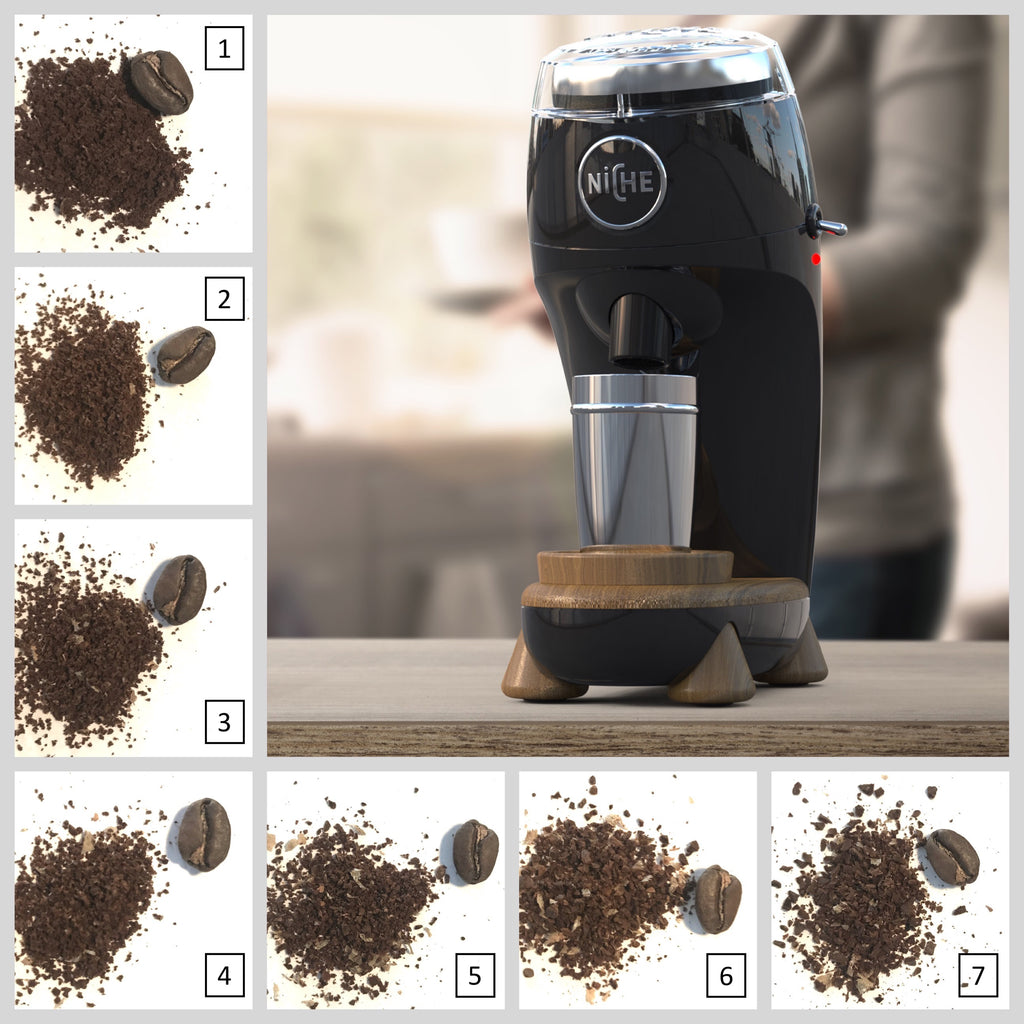About a Bean: The Grind
Why do you even need to grind your coffee? The answer is quite similar to why you should make flour from wheat to make bread.
A coffee bean is a power pack that hides inside its shell about 1.000 flavors, aromatic substances, and colors. Yup, a thousand! We don’t know them all, but that’s another story. Our job, as enthusiastic coffee drinkers are to release those flavors, colors, and aromas and persuade them to land in the hot water we’ll be pouring over them.
So the basic principle of brewing coffee (nevermind the method, this is a universal principle, but we’ll get back to that a little bit later) is to get water in contact with your coffee. You could soak your whole beans in water and make coffee. Sure, that’s possible, but quite unpractical, as it would just take too long (the oval shape and little surface make it difficult). You could split the bean in half and shorten the brewing time, as you just almost doubled the surface of the coffee bean. Quicker, but still too long. What we are aiming to do with grinding our coffee is to enlarge the surface of the coffee, so that water can do its magic trick of extracting those flavors, aromas, and colors we’re looking for.

OK, here’s where the brewing methods come into play
Brewing methods (besides the method and brewer design itself) differ a lot depending on the contact time between water and ground coffee. When making an espresso, the contact time will be somewhere between 25-30 seconds. To get the most from the ground coffee, the contact surface of the coffee must be huge, hence an espresso grind is a fine grind. A fine grind means that the bean is broken into a countless number of small coffee particles (about 3500 for each bean to be a bit more specific). And guess what – that will increase the surface where water can touch the coffee and extract the yummy flavors and aromas, along with colors. Compare that to a cold brew, where the extraction time is about a thousand times longer (8 hours is 28.800 seconds, compared to 25-30 seconds for an espresso shot). Logically, the size of the coffee particles can be bigger, as water has more time to caress the ground coffee and extract its goodness.
Bottom line – each brewing method needs its grind setting. But as with all things coffee, every piece of knowledge we gain, opens a can of worms. When it comes to grinding, the important question of choosing the perfect grinder opens up. We’ll write about that in another blog post.
To get a bit more graphical, we fired up our Niche Zero grinder and made a few samples of different grinds for different brewing methods. Just for the sake of illustration …

1 - Super Fine Grind – Turkish coffee (Ibrik)
2 - Fine Grind – Espresso, Moka Pot
3 - Medium Fine Grind – Pour Over with GINA, Cone Pour Over Drippers, Siphon Brewers
4 - Medium Grind – Pour over brewing with GINA and most other drippers
5 - Medium Coarse Grind - Chemex
6 - Course Grind – Immersion brewing with GINA, French Press
7 - Extra Coarse Grind – Cold drip with GINA and other cold drip/brew devices






